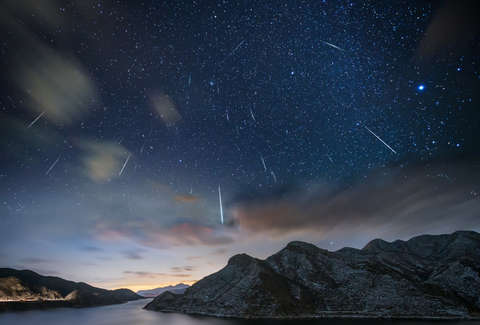
Every year in late July, the Earth passes through the debris left by two comets. This year, both meteor showers peak on the same night. A celestial traffic jam may be on tap in July 28-29, as two meteor showers combine forces to put on a brilliant sky show. The Delta Aquarids meteor shower and the Alpha Capricornids set to put on a dazzling display. Together the showers will produce anywhere between 30 and 40 shooting stars per hour under clear dark skies. Delta Aquariid meteors leave persistent trains – glowing ionized gas trails that last a second or two after the meteor has passed. The meteors burn up in the upper atmosphere about 60 miles (100 km) above Earth’s surface. The best viewing hours are after midnight and before dawn for all time zones around the world. Find an open sky away from artificial lights and don’t worry too much about radiant points. The meteors will appear in all parts of the sky. The Delta Aquariid meteor shower is officially active from about July 12 to August 23 each year. It favors the Southern Hemisphere, though is still visible from mid-northern latitudes. The Alpha Capricornids are active from July 3 through August 15 with a "plateau-like" maximum centered on July 29. What is notable about this shower is the number of bright fireballs produced during its activity period. This shower is seen equally well on either side of the equator. You don’t need any special equipment or skills to view a meteor shower. Stay Tuned!
https://youtu.be/d4Jpdly2H4Q






 Sat Mar 23, 2024 11:33 pm by globalturbo
Sat Mar 23, 2024 11:33 pm by globalturbo

